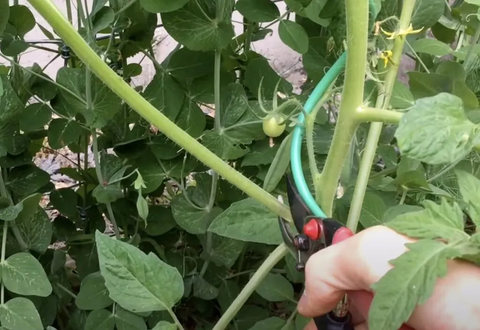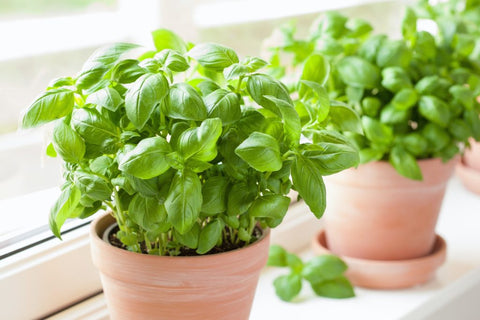Raised bed gardening offers a host of benefits, from improved drainage to enhanced control over your garden's soil quality. However, like any form of gardening, it comes with its unique set of challenges. Whether you're a seasoned gardener or just starting, you might encounter various issues in your raised bed garden. This blog will address common problems and provide practical solutions to ensure your garden thrives. The following content also has some reference value for raised garden beds.Here are 15 raised bed garden problems and their solutions:
1. Soil Quality Issues
Problem: Poor soil quality can hinder plant growth in your raised bed garden.
Solution: Test your soil to identify any deficiencies and amend it with organic matter like compost or well-rotted manure. Regularly adding organic material will improve the soil structure and fertility.
2. Weed Invasion
Problem: Weeds can quickly take over your raised bed, competing with your plants for nutrients and water.
Solution: Mulch your raised bed to suppress weeds. Use organic materials like straw or wood chips, which will also improve moisture retention and add nutrients to the soil as they break down.

3. Pests and Disease
Problem: Raised beds are not immune to pests and diseases, and certain issues can arise.
Solution: Encourage beneficial insects like ladybugs and lacewings to keep pest populations in check. Use organic pest control methods and practice good garden hygiene. If disease strikes, remove affected plants promptly to prevent it from spreading.
4. Poor Drainage
Problem: Raised beds should have good drainage, but if water accumulates in the bed, it can harm your plants.
Solution: Ensure your raised bed has adequate drainage by using well-draining soil and incorporating drainage solutions like gravel or a layer of coarse sand at the bottom.
5. Overwatering or Underwatering
Problem: Raised beds can be prone to overwatering or underwatering, which can stress your plants.
Solution: Monitor soil moisture regularly. Adjust your watering schedule based on the specific needs of the plants in your raised bed. Installing a drip irrigation system can help maintain consistent moisture levels.
6. Nutrient Deficiency
Problem: Yellowing leaves can indicate a nutrient deficiency.
Solution: Ensure your plants receive the necessary nutrients. Organic fertilizers and compost can help enrich the soil. Regularly check the pH level of your soil to ensure it's suitable for your plants.

7. Plant Spacing
Problem: Overcrowding plants in your raised bed can lead to poor air circulation, increasing the risk of disease.
Solution: Follow recommended plant spacing guidelines. Proper spacing allows for better air circulation and helps prevent overcrowding.
8. Plant Selection
Problem: Choosing the wrong plants for your raised bed or region can lead to poor performance.
Solution: Select plants suitable for your raised bed's size and the local climate. Research and plan your garden to include plants that thrive in your specific conditions.
9. Elevated Temperatures
Problem: Raised beds can sometimes heat up quickly in hot weather, potentially damaging plants.
Solution: Use shade cloth or row covers to protect your plants from excessive heat during the hottest part of the day. Proper watering is also crucial to keep plants cool.
10. Garden Size
Problem: Raised beds can vary in size, and having beds that are too large can make maintenance challenging.
Solution: Choose the appropriate size for your raised bed, ensuring you can comfortably reach all areas for planting, maintenance, and harvesting.
11. Access to Sunlight
Problem: Some raised beds may not receive enough sunlight, affecting plant growth.
Solution: Carefully select the location of your raised bed to ensure it gets adequate sunlight. Raised beds should generally receive at least 6-8 hours of direct sunlight each day.

12. Pollination Issues
Problem: Some plants in your raised bed may not be producing fruit due to poor pollination.
Solution: Encourage pollinators like bees and butterflies by planting nectar-rich flowers nearby. Hand pollination is also an option for specific plants.
13. Soil Erosion
Problem: Soil erosion can be a concern, especially in raised beds located on sloped terrain.
Solution: Use raised bed edging or garden borders to prevent soil erosion. Properly secure your raised bed in place.
14. Caring for Excess Produce
Problem: Sometimes, your raised bed garden produces more than you can use or give away.
Solution: Consider preserving excess produce through canning, freezing, or drying. You can also share your surplus with friends, family, or local food banks.
15. Sustainability
Problem: Gardeners often want to ensure their raised bed gardening practices are environmentally responsible.
Solution: Choose materials and practices that align with sustainability principles. Consider using eco-friendly materials for your raised bed and practice organic gardening methods.
In conclusion, raised bed gardening is a rewarding way to grow your own food and beautify your outdoor space. By addressing common issues and implementing the solutions provided, you can enjoy a bountiful and thriving garden in your raised beds. Whether you're a beginner or an experienced gardener, troubleshooting and finding solutions to raised bed garden problems will help you become a more successful and sustainable gardener.









